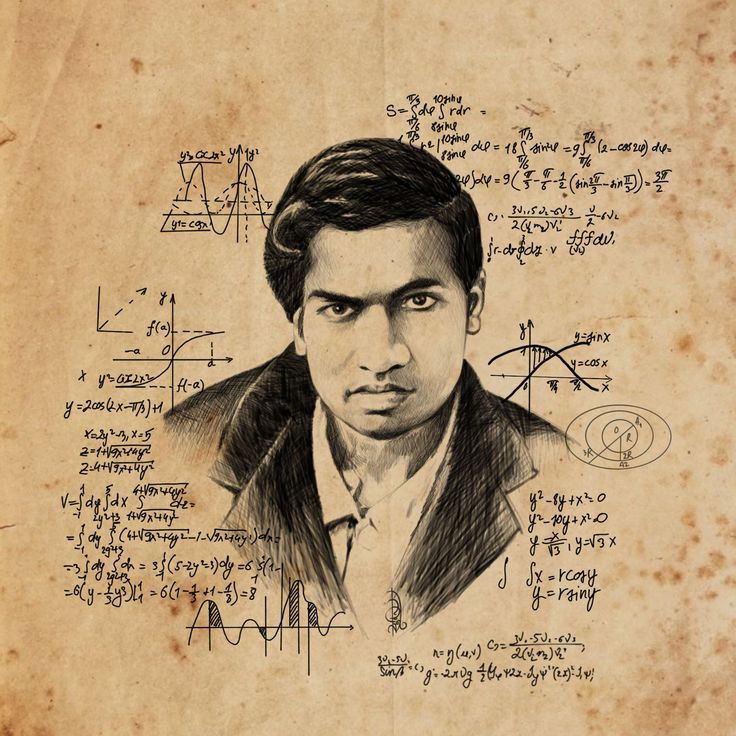Srinivasa Ramanujan
- skillarium academy
- Nov 5, 2024
- 3 min read
Srinivasa Ramanujan was a brilliant Indian mathematician known for his substantial contributions to mathematical analysis, number theory, infinite series, and continued fractions. Born on December 22, 1887, in Erode, India, he displayed extraordinary mathematical talent from a young age, teaching himself advanced mathematics.
Despite facing significant challenges, including a lack of formal education and financial difficulties, Ramanujan's work caught the attention of the British mathematician G.H. Hardy. In 1914, he moved to England, where he collaborated with Hardy and made many groundbreaking discoveries.
Some of Ramanujan's most famous contributions include:
Ramanujan Prime: He defined a certain type of prime number that has specific properties related to prime number theory.
Ramanujan-Hardy Number (1729): This is known as the first "taxicab number," the smallest number expressible as the sum of two cubes in two different ways.
Modular Forms: He made significant contributions to the theory of modular forms, which are important in various areas of mathematics, including number theory and algebraic geometry.
Partition Function: He developed formulas related to partitioning numbers, leading to a deeper understanding of how numbers can be expressed as sums of other numbers.
Ramanujan's work was largely self-taught and often came in the form of intuitive conjectures. Many of his results were later proven and have had a lasting impact on mathematics. He passed away at a young age, on April 26, 1920, but left behind a legacy that continues to inspire mathematicians today. His story exemplifies the power of intuition and creativity in mathematics.
The Educational Theory of Srinivasa Ramanujan
Srinivasa Ramanujan, one of the most remarkable mathematicians in history, not only made profound contributions to mathematics but also demonstrated an unconventional approach to learning and education. His educational theory can be inferred from his life, his methods of mathematical discovery, and the challenges he faced. This essay explores Ramanujan's educational theory, emphasizing self-directed learning, intuitive understanding, and the importance of collaboration and mentorship.

Ramanujan’s approach underscores the importance of self-motivation in education. Students are encouraged to take charge of their learning, explore topics that fascinate them, and seek resources independently. This proactive stance fosters a deeper understanding of subjects, as students learn not only from textbooks but also from real-world applications and personal exploration.
This aspect of Ramanujan's work highlights the importance of developing intuitive understanding in education. Students should focus on grasping the underlying concepts rather than memorizing formulas or algorithms. This approach encourages critical thinking and fosters creativity, allowing students to develop their own methods of problem-solving. Educators can facilitate this by presenting mathematical problems in ways that allow students to discover solutions rather than simply being taught methods.
The importance of mentorship and collaboration in education cannot be overstated. Students should seek mentors who can guide them in their learning journeys and provide constructive feedback. Collaborating with peers also enriches the learning experience, as it exposes students to diverse perspectives and problem-solving strategies. Schools and universities can create environments that promote collaboration through group projects, study groups, and open discussions.
Education should prepare students to embrace failure as a part of the learning process. Ramanujan’s life teaches students that setbacks can lead to growth and innovation. Schools should foster a growth mindset, encouraging students to view challenges as opportunities to learn and improve. This perspective cultivates resilience, enabling students to tackle complex problems with confidence.
Education should be culturally responsive, recognizing and valuing the diverse backgrounds of students. By integrating cultural perspectives into the curriculum, educators can create a more inclusive learning environment that resonates with all students. This approach not only enhances engagement but also encourages students to contribute their unique perspectives to the learning process.
Srinivasa Ramanujan's educational theory is characterized by self-directed learning, intuitive understanding, collaboration, resilience, and cultural integration. His life and work illustrate that education is not just about absorbing information but about nurturing curiosity, creativity, and critical thinking. Students can draw inspiration from Ramanujan's journey, recognizing that their unique paths in learning can lead to profound discoveries and contributions to the world. By adopting elements of Ramanujan's educational philosophy, students can develop a deeper appreciation for mathematics and a greater capacity for innovation in all areas of their lives.







Comments